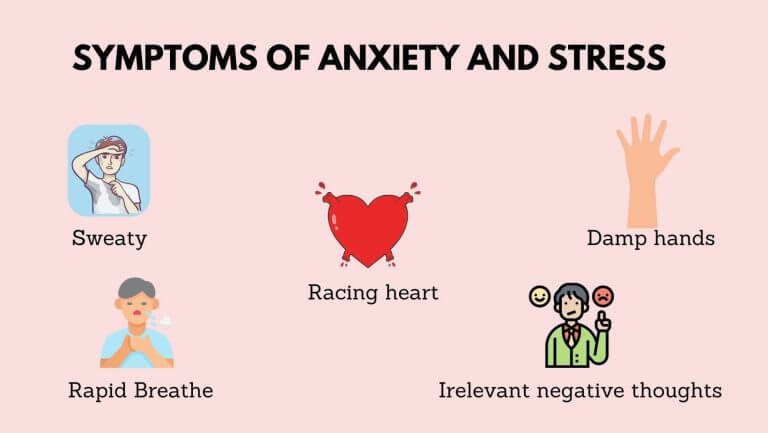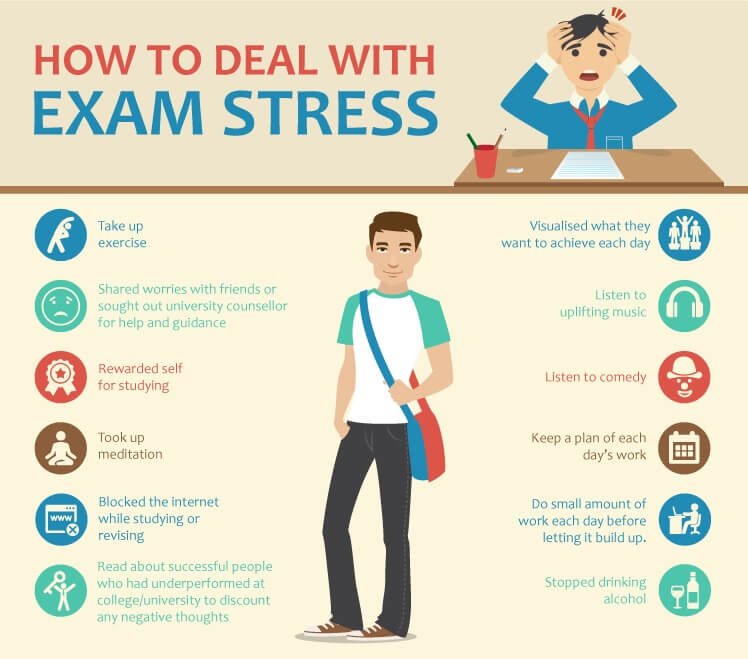How To Overcome Exam Anxiety In Students: Simple Tools And Techniques For Success
The start of a new semester can be one of the most daunting periods in a students’ life. With exams looming in the horizon, it’s easy for any student to feel overwhelmed or anxious about their upcoming tests. But don’t worry – there are simple tools and techniques you can use to help reduce exam anxiety, so that you can stay focused on the task at hand and achieve success!
Introduction
Exam anxiety is a very real and valid concern for students of all ages. It can manifest itself in many different ways, from feeling nauseous and lightheaded to full-blown panic attacks. For some, it may even lead to avoidance behaviors, such as skipping class or not studying for the test.
There are certain tools and techniques that can help students overcome anxiety and perform their best during exams. If you or someone you know is struggling with exam anxiety, read on for some helpful tips.

Symptoms of Exam Anxiety
Exam anxiety can present itself in a variety of ways, including but not limited to: feeling overwhelmed or hopeless, having difficulty concentrating or studying, feeling physically ill (e.g. butterflies in the stomach, sweating, racing heart), and avoiding test-taking situations altogether. If you are experiencing any of these symptoms, know that you are not alone and there are steps you can take to manage your anxiety.
How To Overcome Exam Anxiety?
It’s normal to feel some anxiety before an exam. After all, exams are designed to test what you know and measure how well you’ve learned the material. But for some students, exams can trigger a level of anxiety that interferes with their performance. Fortunately, there are several things you can do to overcome exam anxiety and improve your chances of success.
Here are some tips for overcoming exam anxiety:

– Building Confidence
One of the best ways to overcome exam anxiety is to be prepared. Make sure you understand the material and have a study plan. If you know what to expect, you’ll be less likely to feel anxious about the test.
During the exam, it’s important to stay calm and focused. If you start to feel overwhelmed, take a few deep breaths and remind yourself that you know the material. It can also be helpful to break the test down into smaller parts so you don’t feel overwhelmed by the entire thing.
After the exam, take some time for yourself to relax and decompress. Don’t dwell on your performance; instead, focus on what you did well and where you can improve for next time. With some effort and preparation, overcoming exam anxiety is possible for anyone.
– Practicing Mindfulness
One of the most effective is mindfulness. Mindfulness is the practice of being present in the moment and paying attention to your thoughts and feelings without judgment.
Studies have shown that mindfulness can help reduce anxiety, improve focus, and boost performance on tasks like exams. If you’re feeling anxious about an upcoming exam, try practicing some mindfulness exercises. Focus on your breath and pay attention to the sensations in your body. Accept whatever thoughts and emotions come up without judgment. Let them go and return your focus to your breath. With practice, you’ll be able to better manage your anxiety and ace that exam!

– Pomodoro Technique
The Pomodoro Technique is a simple time management tool that can be used to overcome exam anxiety in students. The technique involves working on a task for 25 minutes, then taking a 5 minute break. This process is repeated 4 times, after which a longer break is taken.
The Pomodoro Technique can be used to help students focus on their studies and avoid distractions. It can also help to breaking down large tasks into smaller, more manageable chunks. By using the Pomodoro Technique, students can make better use of their study time and reduce stress levels.
– Develop a Routine For Studying
When it comes to exams, there is no one-size-fits-all solution for overcoming anxiety. However, developing a routine for studying can help to make the process less daunting and more manageable.
Here are a few tips for creating a study routine:
- Wake up early and start your day with some light exercise. This will help to get your body and mind energized for the day ahead.
- Dedicate a specific time each day to studying. Whether it’s an hour in the morning or evening, try to stick to the same time each day so that it becomes part of your daily routine.
- Take regular breaks during your study sessions. Don’t try to power through without taking any breaks – this will only lead to burnout. Instead, take 5-10 minute breaks every 30 minutes or so to give your brain a rest.
- Make sure you’re studying in a comfortable environment that suits your learning style. If you struggle to focus in a messy room, tidy up before you start studying. Likewise, if you find that music helps you focus, make sure you have some background noise playing while you work.
- Set realistic goals for each study session and celebrate when you reach them. Breaking down the task at hand into smaller goals will make it feel less daunting and increase your sense of achievement when you reach them
– Get Plenty of Sleep and Exercise
Sleep is especially important for students during exams, as it helps to consolidate information in the brain and improves memory recall. Aim for around 8 hours of sleep each night in the lead up to your exams, and if possible, take a nap during the day too.
– Practicing Relaxation
One of the best ways to overcome exam anxiety is to practice relaxation. There are many different ways to relax, but some simple techniques include deep breathing, progressive muscle relaxation, and visualization.
Deep breathing is a great way to calm the mind and body. Sit or lie down in a comfortable position and close your eyes. Slowly inhale through your nose, filling your lungs from bottom to top. Hold your breath for a moment, then slowly exhale through your mouth. Repeat this process several times until you feel yourself relaxing.
In Progressive muscle start by tensing the muscles in your toes for a count of five, then release the tension and relax for a count of 10. Work your way up your body, tensing and relaxing each muscle group until you reach your head and face.
Visualization is another helpful relaxation technique. picturing yourself in a peaceful, calming place can help you feel more relaxed and less stressed. It’s important to choose a place that feels safe and comforting to you so that you can really picture yourself there – it could be somewhere you’ve been before or somewhere you’ve always wanted to go. Once you have a clear image in your mind, take several deep breaths and focus on how relaxed you feel in this place.

